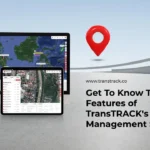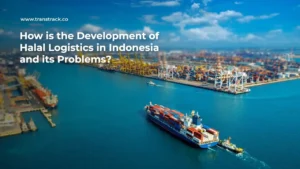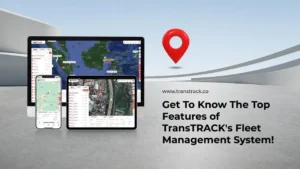Delivery Note: Understand the Functions, Types and Differences with Delivery Order
Posted on November 23, 2023 by Nur Wachda Mihmidati

Delivery note is one of the terms that often appears in the logistics and freight forwarding industry. This note is an important part of the delivery because it includes some important information. In addition, there are still many who think that delivery notes are the same as delivery orders, even though they are different.
In this article, TransTRACK will discuss what a delivery note is in full, starting from the functions, types, and also the difference with delivery orders. Just take a look at the information below.
What is a Delivery Note?
Delivery Note, is a written document used in the process of shipping goods. This document contains important information about the goods to be delivered, including the quantity, type of goods, and other relevant details. It also contains information about the receipt of the goods by the recipient, such as the signature and date of receipt.
In practice, this note is physical evidence that an item has been delivered and received properly by the party concerned. This document is usually included along with the goods being shipped, and the consignee will check it before the goods are received.
Delivery Note Function
The function of this note is not only to record the delivery and receipt of goods, but also has a number of important roles that support the efficiency of business operations. Below, are some of the functions of a delivery notes that you need to know:
Proof of Receipt
The main function of a delivery notes is as written proof that the receiving party has received the delivered goods. It includes the recipient’s signature and the date of receipt. With this evidence, the sending company and the receiving party have a clear record of the receipt of the goods, which can avoid disputes in the future.
Stock Monitoring
Delivery notes also play a role in stock monitoring. When a shipment is made, this note records the number of items that have been shipped. This helps the company to monitor stock more accurately. When the goods are received, the note also reflects the stock reduction. This is very important to avoid overstock or stock-outs, which can affect operational efficiency.
Transaction Documentation
Detailed shipment transactions are also recorded in this note. The information included in this document includes details of the goods being shipped, such as the name of the goods, serial number (if any), quantity, and description. This note also includes the recipient’s information, including their name and address. With this note, companies can track each shipment historically, as well as help record revenue and costs related to the shipment.
Proof of Insurance Claim
In the event of damage or loss of goods during delivery, this note can be used as proof of an insurance claim. This document records the condition of the goods at the time of delivery and the recipient’s signature. This note helps the insurer in determining a valid claim.
Debt Reminder
For transactions that involve payments at a later date, this note can be used as a reminder of the debt. This document lists the terms of payment, including the due date and the amount to be paid. This means that the delivery note helps in cash management and payment tracking.
Types of Delivery Note
There are several types that can be used in various situations. Here are some of them:
Standard Delivery Note
The standard delivery note is the most common type used in the freight forwarding process. This document lists the basic details of the shipment such as the type of goods, quantity, and recipient’s address.
This type of note is used for regular shipments of goods where there are no special requirements or additional instructions. It records the information required to create a receipt.
Multiple Delivery Note
Next is the multiple delivery note which is used when goods are shipped in multiple consignments and requires a separate document for each shipment.
Usually, multiple notes are useful for more complex shipments, such as when a large number of items are sent in separate shipments to different addresses or recipients. This note makes it easier to keep track of each different shipment.
Consignment Delivery Note
A consignment delivery note is used when goods are delivered with payment terms after the goods are sold. This document lists the payment terms that must be met by the receiving party.
This document is often used in consignment businesses, where goods are sent to a consignee for sale, but payment to the consignor is made after the goods are sold. This note records the goods delivered to the consignee, as well as the payment agreement in place.
Delivery Note Weight Details
This type of delivery note is used when shipping items that vary in weight. This document lists the exact weight of each item shipped.
This note is used in shipping goods such as metals, coal, or other materials whose weight may vary. This note helps in accurate weight recording for payment and tracking purposes.
Difference between Delivery Note and Delivery Order
Often, people get confused with the difference between a delivery note and a delivery order, as both are related to the process of delivery of goods. However, there is an important difference between the two:
Delivery note is a document that confirms the delivery of goods and records the receipt of goods by the receiving party. It is used for evidence and stock monitoring purposes.
Meanwhile, a delivery order is an instruction given by the sending party to the party who will make the delivery. It lists the details of the delivery, including the type of goods, recipient’s address, and delivery instructions.
Simply put, a delivery note is a record of what has been delivered, while a delivery order is an instruction on what to deliver. Both are important parts of the delivery process.
In the world of logistics and supply chain management, a solid understanding of delivery notes is essential. A delivery note is a written proof of receipt of goods, but it also has various other functions that affect business operations.
Along with the times, the use of technology will support the logistics and supply chain management process. Technology such as Transportation Management System (TMS) can help companies manage shipments and documentation such as delivery notes more efficiently.
TransTRACK provides TMS solutions that can assist companies in logistics and shipping management. By integrating this technology in your business operational processes, you can optimize your freight forwarding and improve fleet efficiency. For more information about TMS solutions, you can directly visit the website TransTRACK. With the right measures in place, you can improve the efficiency of your freight forwarding operations and provide better service to your customers.
Recent Post
Topic :
 Bahasa Indonesia
Bahasa Indonesia









